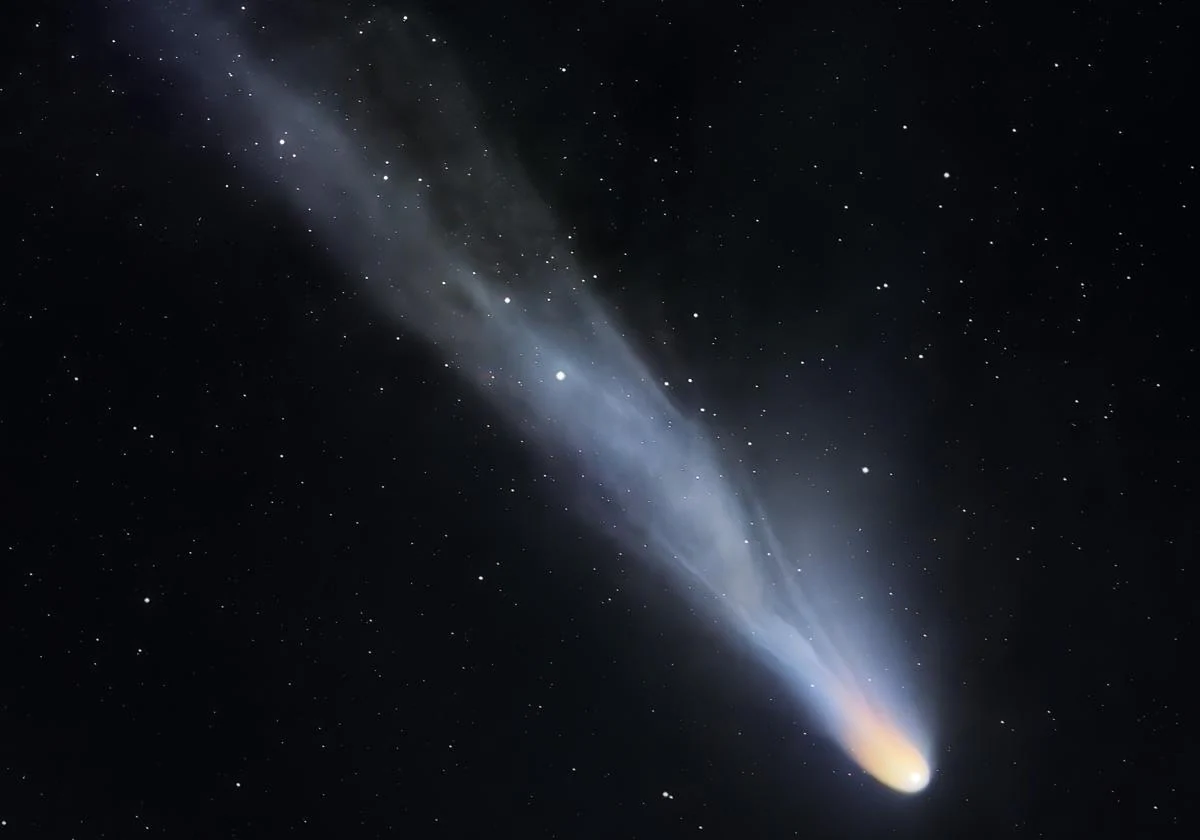“Devil” enjoying the sky: the first of four comets that can be seen on the islands

After the last solar eclipse, which became a global event for astronomy lovers, the Canary Islands will once again be able to enjoy the telescope thanks to a series of phenomena that may have a greater impact due to geographical location and climatic conditions. conditions that the islands offer. We are talking about four comets approaching Earth’s orbit in the coming months. The so-called comet Diablo was the first to burst into the sky.
In this sense, Alfred Rosenberg, scientist at the Institute of Astrophysics of the Canary Islands (IAC), notes that “The Canary Islands, due to their proximity to the equator, provide unrivaled conditions for observing this type of large-scale phenomenon such as comets, and this year we will see some of them that are certainly spectacular.”
In fact, this weekend, according to Rosenberg himself, the so-called “Comet Diablo” will be clearly visible. (12P/Pons Brooks), one of the brightest of the year – you don’t need any technological support to see it. “It is known for its unpredictable behavior, explosions and pops, which give it a special shine.”
Comet Diablo, with an orbital period of 71 years, will be visible from Earth again in the coming days.
James Pearce/ASTROBINE
This celestial body also has orbital period 71 years, so this may be a unique opportunity to contemplate it on the archipelago, as close as possible to the Sun on April 21 – shortly after sunset the time marked as its zenith will arrive. In the northern hemisphere, its observation has become possible in recent days. The term 12P in the name indicates that it was the twelfth periodic comet discovered in the sky, and the Pons-Brooks designation pays tribute to its discoverers, lAstronomers Jean-Louis Pons and William Robert Brooks who identified him during his visits over the years 1812 and 1883, respectively. It should be noted that this comet has approximately It is 34 kilometers in size and describes an elliptical orbit similar to Halley’s, which last passed in 1986.
During this visit, 12P was popularly called “Comet Diablo” due to the appearance it took on in July 2023. after the big bang in which the brightness of the comet is multiplied by 100 and the upper part It took on a shape resembling two large horns.
To view Ponce Brooks during these April days, it is advisable to look to the west, in a place fairly free from obstacles, since the comet is at a low altitude.
The position of Comet Diablo in recent days.
Daniel Lopez (IAC)
Following
The next noticeable celestial body will be comet Olbers, it will be visible starting June 30 and whose closest approach to Earth will occur on July 20.. It can only be observed from the northern hemisphere. Like the previous one, its orbital period is 69 years, but in this case you will need binoculars to appreciate its brightness.
Already September 27 and during the first half of October another of the most important phenomena of the astronomical calendar will be observed in the presence of a comet C/2023 A3 (Tzuchinshan-Atlas). According to the scientific community, it has the potential to become a “great comet”, exhibiting a brightness comparable to that of the brightest stars.
Finally, next November 29 you can see the last year, comet 333P/Linear, perhaps the least noticeable and the most timid compared to the rest.
Comet Olbers (first from left), Tzuchinshan Atlas (top right) and 333P/Linear are the next comets to be observed this year.
Recommendations and tips
Comets are scattered objects and difficult to detect, especially since they move through a sky full of other luminous bodies. Thus, as with other astronomical events, there are some rules that must be followed in order to enjoy observing them.
To pinpoint the location of Comet Diablo, You should look west 45 minutes after sunset. The object is located just below the constellation Taurus, near the horizon. You can also try using it as a reference to a bright planet. Jupiterwhich appears to your right.
We must take into account that every day it gets dark a little later and it will be below the horizon when we can observe it. We must have a clear western horizon. Likewise, it’s worth looking a place free from light pollutioncarry a little binoculars or small telescopeeven if the comet is expected to be observable with the “naked eye”.
It will always be good to download in parallel mobile applications which track the trajectory of both this and future celestial bodies.
Those who manage to see the comet will see a blurry spot of green or blue color, similar to a faint star.